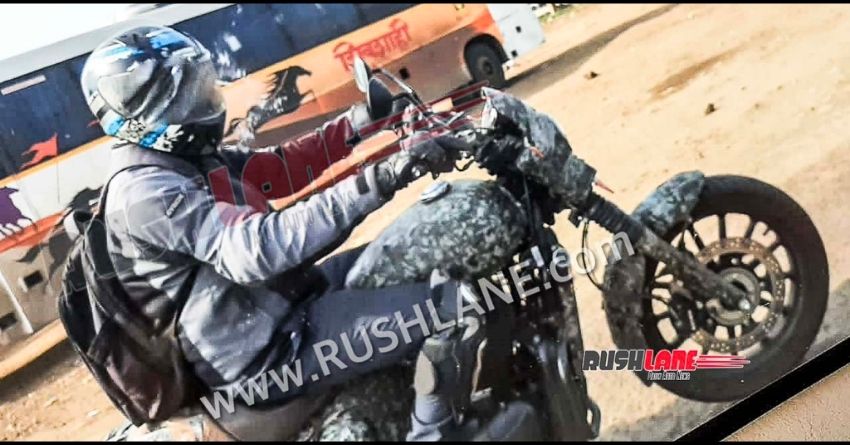Mahindra & Mahindra Ltd. owned Classic Legends, is currently gearing up to introduce new motorcycles to the country. Currently, the Jawa Standard, Forty-Two, and Jawa Perak are offered in our country by the brand. The bikemaker is soon going to add a cruiser bike to its current lineup. The test mule has been spotted testing several times on Indian roads, and now once again, the spy photos have surfaced online. These spy shots are courtesy of automobile enthusiast Saurabh.
However, the test mule spotted near Pune, Maharashtra is completely camouflaged, but still, we can see the retro-inspired styling of the bike. This is confirmed by the round headlight, spoke-styled alloy wheels, a teardrop-shaped fuel tank, a compact windscreen and fork gaiters. It also shows a broad rear fender and a comfortable seat setup. As a matter of fact, the pillion seat seems more spacious than the Standard and Forty-Two.

The forthcoming Jawa Cruiser appears to be the same size as the Perak and is likely to use the same underpinnings as the single-seat bobber. Most of the key elements, like the engine casing, leg guard, spoke-styled alloy wheels, a dual-pipe exhaust and frame, have been blacked out to give it a sportier look. However, depending on the variant and colour scheme, these components may be finished in chrome. For a comfortable sitting posture, a wide and tall handlebar and slightly forward-set footpegs are offered.
The anticipated Jawa Cruiser will most likely be powered by a Perak-derived 334cc, liquid-cooled, single-cylinder, DOHC engine mated to a 6-speed transmission. This engine is capable of churning out 30 bhp and 32.74 Nm. Suspension duties are assigned to conventional telescopic front forks and twin shock absorbers at the rear end. Braking chores are done by single discs on both ends, further supported by dual-channel ABS.
Images Source: RushLane

